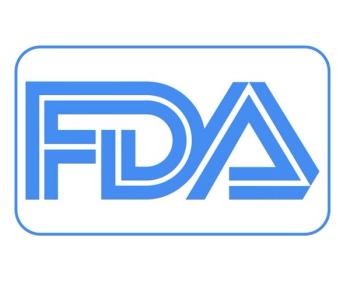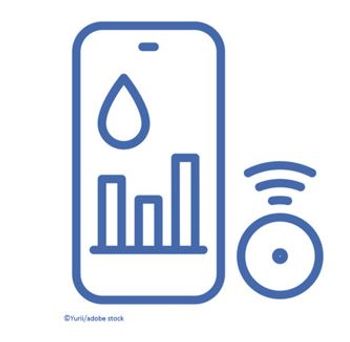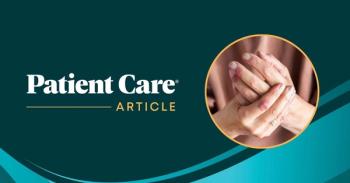For additional coverage on women’s health and cancer screening, check out:
Screening for Breast Cancer in Patients With Dense Breast Tissue: A Q&A With Donna Plecha, MD

TMS 2025: Donna Plecha, MD, discusses how primary care physicians should approach breast cancer screening in women with dense breasts and use MRI effectively.
Since
At
Plecha is chair and Theodore J. Castele professor of radiology at the Case Western Reserve University School of Medicine in Cleveland, Ohio, and the Ida and Irwin Haber and Wei-Shen Chin chair of the department of radiology at University Hospitals Medical Center.
The following transcript of the interview has been lightly edited for length, style, and flow.
Patient Care®: Dr Plecha, you are presenting during a symposium on breast health. Can you briefly describe your presentation?
Donna Plecha, MD: I'm talking about how to screen for
PC: What are one to two takeaways you hope clinicians will take away from your presentation?
Plecha: Number one is to do a risk assessment of your patients starting at the age of 25, which is hard to believe. But if you start at the age of 25, you might find with these risk assessment tools that we currently have—which may advance and get better in the future—you can identify patients that might need to be screened earlier, might need genetic counseling, might need genetic testing. All of those things that we can catch really early before it's too late, because some patients, and especially African American women, can get breast cancer at earlier ages. They're more aggressive and they're more likely to die from breast cancer. So it's good to be able to identify patients early if they're at risk.
Number two is to start screening routine patients at routine risk at the age of 40 and to screen every year, because you're more likely to save more lives if you do that.
The third thing is for those patients with dense breasts, to consider supplemental screening. Breast MRI has been shown to be the most sensitive tool, especially in patients with dense breast tissue. So those three points are the main takeaways.
PC: You mentioned screening recommendations. Can you walk through the most important screening recommendations, or what the differing recommendations are?
Plecha: There are multiple different recommendations out there. I would say that they all agree that to save the most lives you have to start at the age of 40. Even the
The American College of Radiology and the NCCN guidelines both agree that starting at the age of 40 and using tomosynthesis, which is the 3D mammogram, is the best way to decrease mortality and morbidity from breast cancer.
PC: Can you walk us through your approach when a patient is told they have dense breasts? What is the decision-making process for determining who needs supplemental screening beyond standard mammography?
Plecha: Just to be clear, there is a national law that now states that every patient needs to be told if they have dense breast tissue or not when they get their mammogram. That went into effect in September of 2024. The FDA started this, that all mammogram facilities must provide all patients information to let them know if they have dense breast tissue or not.
On top of that, there are guidelines. Sometimes people are a little critical of the American College of Radiology because some people say, "Well, you're just trying to increase volumes and make money and tell patients that you have to keep screening." But NCCN guidelines, which is not a College of Radiology, recommends screening in extremely dense patients.
There are 4 groups of density: two which are non-dense and two which are dense. The two that are dense—there's one that's called heterogeneously dense, and then there's one that's extremely dense. There's enough evidence in the literature to recommend MRI screening in those patients with extremely dense breasts. Most of that was done in a prospective trial in the Netherlands that really supports screening those patients with supplemental MRI.
For the heterogeneously dense, the American Cancer Society, NCCN, ACR, and the European group would recommend considering—and it may not come down as hard as a complete recommendation, but consider MRI for those patients. In the ACR, we say if a patient wants supplemental screening, then we would recommend MRI. The NCCN says consider, and the European society says consider as well, either ultrasound or MRI, but MRI is the better test for supplemental screening.
The other thing to consider is that even if you have dense breasts and no other risk factors, just having dense breast tissue is a risk factor for cancer. It's not just that you can't find it; it's actually a risk factor. On top of that, if you have other risk factors, that would maybe push you more to recommend getting and ordering screening MRI. They're even recommending in patients who don't have any other risk factors and just have extremely dense breasts that they get an MRI.
The other thing to think about is that MRIs in the past can take up to 45 minutes. But multiple studies have shown that we now do what's called an abbreviated MRI, which is 10 minutes or less. A lot of institutions offer that on a cash basis, and we use that tool for screening, for supplemental screening in patients with dense breasts. There have been multiple studies done with that, and there was a large randomized controlled trial supported by ACRIN ECOG. Chris Comstock is the lead author on that, and it was a multi-site trial all over the country—and I think there were some patients in Germany too. It just showed that MRI can pick up way more cancers than a 3D mammogram. A 3D mammogram might pick up seven to nine cancers per 1000 women screened, but an MRI is going to pick up 17 to 25 cancers per 1000 women screened. So it's a much more sensitive tool for finding cancers.
PC: What do you see as the biggest barriers in implementing optimal screening for women with dense breasts?
Plecha: One of the barriers is that PCPs don't understand or know about supplemental screening. Number two, there's a lot of talk about all of the risks of screening. You might end up getting a biopsy that's not cancer. You might end up getting additional imaging that's unnecessary. But I think that if you look at the studies that have been done where they actually ask patients, "What would you rather have? Would you rather have some extra studies and maybe a negative biopsy, but find these cancers early when they're really treatable? Or would you rather wait because you're going to end up finding it at a later stage and it's going to be harder to treat?" Most patients are okay with the risks that are discussed associated with screening.
One of the other barriers to MRI screening is not all geographical areas in the US have good access to MRIs, and they are expensive. For example, if a person gets an MRI and is—assume I have the cancer gene, I have a BRCA-positive alteration—my insurance will cover my MRI. But assume my MRI costs over $1000 and I have over $1000 of deductibles, so my out-of-pocket cost, because I haven't reached my deductible yet, is over $1000. There are a lot of people with high-deductible insurance plans, if they have insurance plans. If you compare that to cash only, there are different ranges of how much these abbreviated MRI studies cost. I have seen up to $500 to $750. Ours is $250. So if I am out of pocket $250 versus $1000 or more, I'm going to pick the $250. It is going to be only 10 minutes. If I am claustrophobic, it is much easier to get through. And I am going to get very similar results for a test that is screening me with maybe increased risk, or normal findings in a patient with dense breast tissue.
Some of our high-risk patients were not getting MRIs in the past because they could not afford them, and now they're starting to get these abbreviated MRIs. They might not be able to afford it yearly, but maybe every other year or every third year is better than none.
PC: You mentioned primary care education. Research has shown that many PCPs feel like they need more education on breast health and breast density to properly counsel their patients. What is your approach to effective communication around this topic with patients, and where do you see the biggest need for education among PCPs?
Plecha: You have to let patients know—you have to notify them, by law—that they have dense breasts. In addition to that, we send a pamphlet to our patients educating them about breast density and talking about supplemental screening and talking about abbreviated MRI. That's our way of educating our patients.
In addition to that, when our patients come in, they fill out a form electronically with multiple questions, and then those questions go through a risk assessment calculation. We use Tyrer-Cuzick for our risk assessment tool, and that gives us a risk assessment of that patient. So we know that they have dense breasts, and we know what their risk is by the answers that they gave us.
If they are over the 20% of lifetime risk of breast cancer, then we put in our report to the PCP that we would recommend MRI in this patient. They could refer the patient to a high-risk clinic to be evaluated to see if they need genetic counseling, genetic testing. The nurse practitioners that see patients in these clinics will also order the supplemental screening that's needed. So that might be a way to help the PCPs deal with patients that are at increased risk.
When it comes to patients with dense breasts without any other risk factor, those are the patients that we need the PCPs to be able to have a discussion with. We need to have them say, "Okay, you are at increased risk because you have dense breast tissue, and studies have shown that supplemental screening is helpful in patients like you. Mammogram, even though it's a 3D mammogram, may not pick up breast cancers that an MRI will. And if you're extremely dense breasted, the NCCN guidelines 100% recommend—not just consider but recommend—supplemental screening with an MRI."
PC: What are any emerging research or technologies in this space that PCPs should be aware of?
Plecha: There's something new that I'm debating whether I'm putting it in my talk because it's getting long, but I think I should. There's some new literature out there that when you get a mammogram, there are some
In the future—this isn't FDA approved yet—the mammogram might be able to tell us this patient in five years has an increased risk of breast cancer. Does that mean that we screen her more often with MRI and mammogram in the next five years? Number two, it also could mean that we're going to give this patient medication that will decrease her risk of getting
The other thing that's coming down the pipe is something called a polygenic risk score, and that is specific to you. It's by looking at your DNA—it'd be a blood sample—and you and a twin sister, or you and a sister, might have completely different polygenic risk scores. Those aren't ready for prime time yet either. But I think by looking at some of these tools and technologies down the road—and I think quicker than 10 years—we might be in a different place and be able to do what people have been trying to do in the past, which is really individualized screening pathways.
Somebody that we don't think is going to get breast cancer in the next five years, somebody that doesn't have dense breast tissue, maybe they don't get screened every year. Maybe they get screened less often with a mammogram. Maybe we do this risk assessment every two to three years on the mammogram, and then we see if there's some blip that's, "Oh, now it looks like maybe you might get breast cancer."
I just think that in the future, we're going to have a better way of really making our screening pathways for the patients really individualized to that patient. But we're not quite there yet. I'm excited that we have an opportunity in the future to do that.
Sources:
- US Food and Drug Administration. Important information: Final rule to amend the mammography quality standards act (MQSA). Revised September 10, 2024. Accessed October 31, 2025.
https://www.fda.gov/radiation-emitting-products/mammography-quality-standards-act-mqsa-and-mqsa-program/important-information-final-rule-amend-mammography-quality-standards-act-mqsa - Task force issues final recommendation statement on screening for breast cancer. News release. US Preventive Services Task Force. April 30, 2024. Accessed October 31, 2025.
https://www.uspreventiveservicestaskforce.org/uspstf/sites/default/files/file/supporting_documents/breast-cancer-screening-final-rec-bulletin.pdf
Newsletter
Enhance your clinical practice with the Patient Care newsletter, offering the latest evidence-based guidelines, diagnostic insights, and treatment strategies for primary care physicians.




















































































































































































































































































